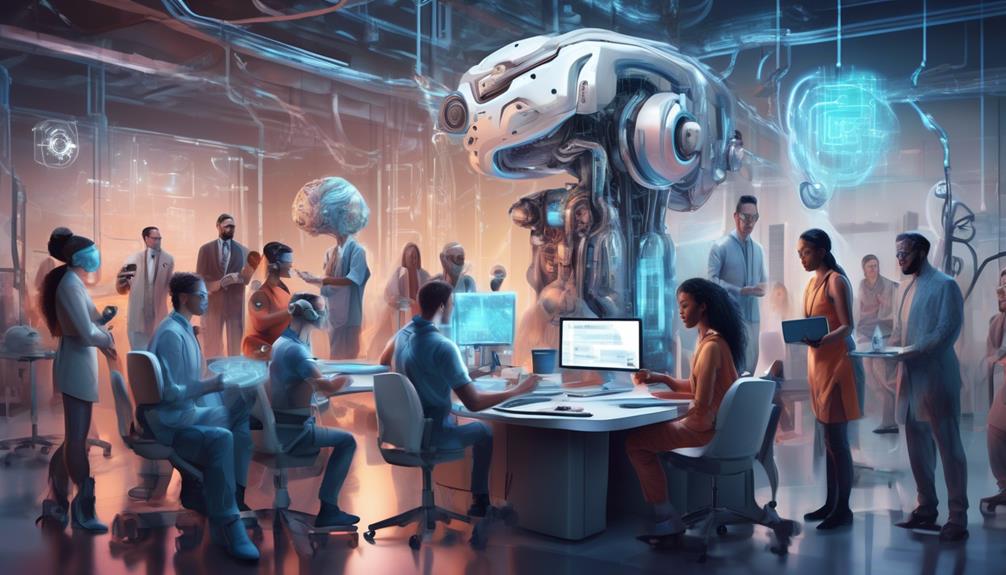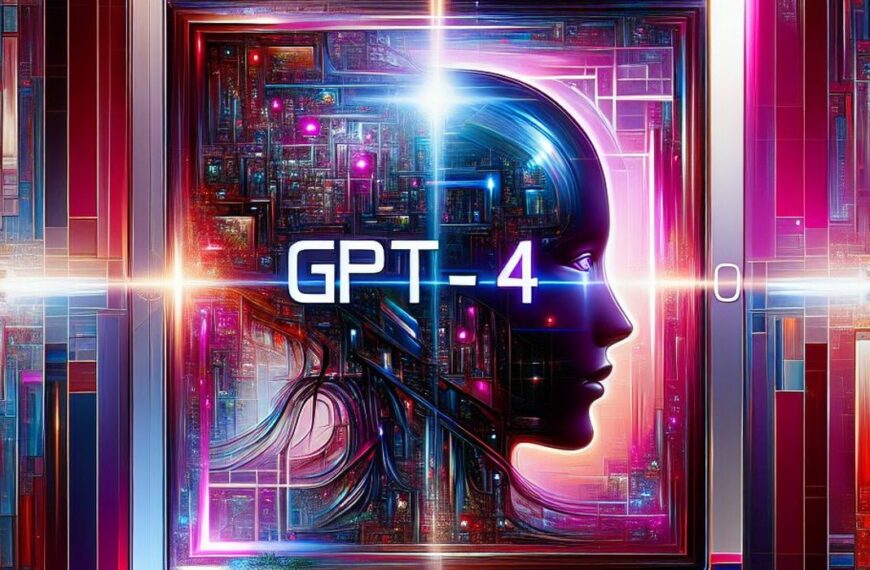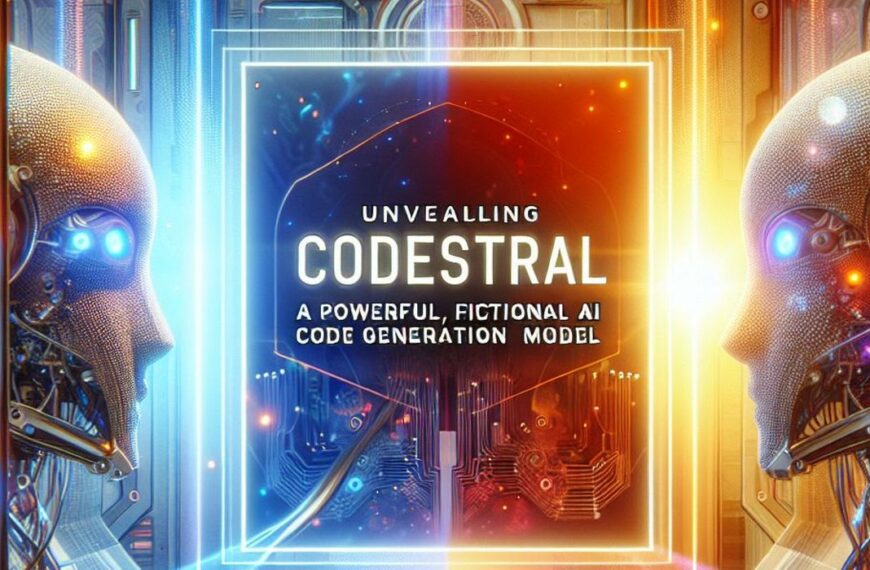Picture a world where AI seamlessly integrates into our daily lives, transforming the way we interact with technology. OpenAI Assistants API is poised to revolutionize the future of AI, offering developers like yourself the tools and capabilities to unlock a new level of innovation. But how exactly does this groundbreaking API work? What are the practical applications in various industries? And most importantly, how can you harness its power to build your own intelligent assistants? In this discussion, we will explore these questions and more, uncovering the immense potential of OpenAI Assistants API and its role in shaping the future of AI. Get ready to embark on a journey that will challenge your perceptions and open doors to endless possibilities.
Table of Contents
Key Takeaways
- OpenAI Assistants API empowers developers to create smart virtual assistants.
- The API provides tools for conversation management, retrieval of additional text, and code interpretation.
- Assistants API can be used in various industries such as AI-driven app development, enterprise knowledge management, and customer support automation.
- The API simplifies complex coding tasks, enhances development efficiency, and improves user experience.
Unveiling the OpenAI Assistants API
Let’s now take a closer look at the driving force behind the Assistants API and the functionality it offers. The Assistants API is empowering developers to create smart virtual assistants by providing tools for easier conversation management, retrieval of additional text, code interpretation, and improved function calling. These features pave the way for more advanced and seamless AI interactions, revolutionizing the future of AI.
The Driving Force Behind the Assistants API
The driving force behind the Assistants API is its ability to empower developers in creating intuitive and smart virtual assistants. With the incorporation of retrieval tools, the API allows for the augmentation of external knowledge, enhancing the capabilities of virtual assistants in providing accurate and factual responses. Additionally, the inclusion of a code interpreter simplifies complex coding tasks, enabling developers to create intelligent applications with ease. The Assistants API also supports function calling, allowing for greater customization by integrating developer-defined programming functions. This feature simplifies the interaction between the AI assistant and other software, facilitating the creation of natural language interfaces. OpenAI’s Assistants API, currently in beta phase, is actively expanding its functionality based on user feedback, driving innovation and revolutionizing the future of AI.
Functionality of Assistants API
Enhancing developer capabilities, the Assistants API revolutionizes AI by providing a range of powerful functionalities. With the OpenAI Assistants API, you can easily manage longer conversations or threads using threading tools, making it more efficient to handle complex interactions. The API also includes retrieval tools, allowing you to store additional text and retrieve accurate factual information. Furthermore, the built-in code interpreter enables GPT to generate and execute Python code based on natural language instructions, simplifying complex coding tasks. Additionally, improved function calling makes it easier to interact with other software, facilitating the creation of intelligent AI agents and natural language interfaces.
Diving Deeper: How Does Assistants API Work?
To understand how the Assistants API works, you need to grasp its core components and the workflow. The core components include:
- Threading tools for managing conversations
- Retrieval tools for storing additional text
- Built-in code interpretation for executing Python code
The workflow involves developers using the API to create AI agents that can interact with users through natural language, making it easier to build advanced AI applications.
Core Components of Assistants API
By delving into the core components of the Assistants API, you can gain a deeper understanding of how this revolutionary technology operates. The Assistants API includes several key features that are revolutionizing the future of AI:
- Easier conversation management with threads: This allows developers to easily handle longer conversations or threads with the help of threading tools, making interactions more seamless and natural.
- Retrieval tools for additional knowledge: The API enables the storage of additional text, allowing for accurate factual responses and augmenting the AI’s knowledge base.
- Code interpretation and function calling: The Assistants API includes a code interpreter, enabling GPT to generate and execute Python code based on natural language instructions. It also supports function calling for developer-defined programming functions, simplifying complex coding tasks.
These core components pave the way for more advanced and intelligent AI interactions, making it easier to create user-centric applications and pushing the boundaries of innovation in AI technology.
Understanding the Workflow of Assistants API
Now let’s dive deeper into the workflow of the Assistants API and explore how this revolutionary technology operates. The OpenAI Assistants API is designed to revolutionize the future of AI by providing developers with powerful tools to create AI-driven virtual assistants. One key aspect of the workflow is knowledge retrieval, which allows the storage of additional text for accurate factual responses. This feature enables the virtual assistant to access a vast amount of information and provide relevant answers to user queries. Additionally, the Assistants API includes other essential components such as thread management for handling longer conversations, built-in code interpretation for executing Python instructions, and improved function calling for seamless interaction with external software.
Exploring the Power of Assistants API: Industry Use Cases
Now, let’s explore the power of the Assistants API and its potential use cases in various industries. The Assistants API can provide valuable support during the development process, enabling developers to create intuitive and intelligent virtual assistants. Additionally, it can be leveraged for enterprise knowledge management, allowing organizations to efficiently store and retrieve information. Furthermore, the Assistants API can automate customer support, streamlining the process and enhancing customer experiences. Let’s delve into these industry use cases to understand the impact of the Assistants API in different sectors.
Assistants API in Development Support
The Assistants API in development support revolutionizes AI-driven app development by enabling developers to create smarter and user-centric applications tailored to specific industry use cases. With the new Assistants API, you can leverage its versatile tools and features to enhance your application development process. Here’s how it can benefit you:
- Improved Efficiency: The code interpreter allows you to simplify complex coding tasks, saving you time and effort.
- Enhanced User Experience: By utilizing the retrieval component, you can augment your app with real-time guidance and detailed product information, providing a more personalized experience for your users.
- Collaborative Innovation: Being in beta, the Assistants API encourages a collaborative approach by inviting developer feedback, ensuring continuous improvement and innovation.
With an OpenAI account, you can unlock the full potential of the Assistants API and revolutionize your application development process. Get started now and embrace the future of AI-powered applications.
Assistants API for Enterprise Knowledge Management
Assistants API for Enterprise Knowledge Management empowers developers to seamlessly integrate AI-driven virtual assistants into their knowledge management systems. By leveraging the OpenAI API, developers can enhance their enterprise applications with advanced conversational capabilities, enabling users to retrieve information from a knowledge base and receive accurate and contextual responses. The API’s retrieval tools allow for the storage of additional text, enabling assistants to provide factual information. Moreover, the code interpretation feature simplifies complex coding tasks, allowing developers to build natural language interfaces and execute Python code based on user instructions. With the Assistants API, businesses can revolutionize their knowledge management processes, streamline interactions with their applications, and unlock the potential of AI-driven virtual assistants to improve productivity and enhance user experiences.
Customer Support Automation with Assistants API
Automate your customer support processes using the power of OpenAI’s Assistants API. This revolutionary API allows you to create AI-driven virtual assistants that can handle user queries and provide seamless customer support. With the Assistants API, you can streamline your customer support operations and enhance the overall user experience. Here are three ways the Assistants API can transform your customer support automation:
- Efficient Chatbot Integration: Integrate AI chatbots powered by OpenAI’s models into your customer support system to provide instant responses and personalized assistance.
- Accurate Knowledge Retrieval: Utilize the retrieval tools in the API to store and retrieve relevant information, ensuring accurate and factual responses to user queries.
- Natural Language Understanding: Leverage the advanced natural language processing capabilities of the Assistants API to understand user queries and provide tailored solutions.
With the OpenAI Assistants API, you can revolutionize your customer support automation and deliver exceptional service to your customers.
Hands-On: Building an Assistant with OpenAI’s API
To begin building your own assistant using OpenAI’s API, there are a few essential elements you need to get started. In this hands-on guide, we’ll provide you with a step-by-step process for creating your assistant and highlight common troubleshooting issues that you may encounter along the way.
Essential Elements to Get Started
Getting started with building an Assistant using OpenAI’s API requires understanding the essential elements and features of the OpenAI Assistants API. Here are some key points to consider:
- Code Interpreter: The API includes a built-in code interpreter, allowing you to simplify complex coding tasks. This feature enables GPT to generate and execute Python code based on natural language instructions.
- Retrieval Tools: The Assistants API supports retrieval tools, which enhance your applications by allowing you to store and retrieve additional text. This feature enables accurate and factual responses, as well as knowledge augmentation.
- Improved Function Calling: The API supports function calling for developer-defined programming functions. This makes it easier to interact with other software and create AI agents with natural language interfaces.
To get started, you can refer to the OpenAI Assistants API documentation and tutorials, which provide detailed guidance on building an Assistant and utilizing these essential features. With these elements at your disposal, you can create innovative AI interactions and revolutionize the future of AI.
Step-by-Step Guide: Creating an Assistant
Now, let’s dive into the step-by-step process of creating an Assistant with OpenAI’s API, empowering you to build intuitive and smart virtual assistants. To get started, you’ll need to set up your environment and authenticate with the OpenAI API. Once that’s done, you can begin coding your Assistant app using the API’s chat-based model, ChatGPT. You can send a list of messages as input to the API, with each message having a role (‘system’, ‘user’, or ‘assistant’) and content. This allows for easy back-and-forth conversation with the Assistant. To enhance functionality, you can use the code interpreter feature to generate and execute Python code based on natural language instructions. Additionally, you can leverage the retrieval component to store external knowledge for accurate factual responses. With these powerful functionalities, you can create dynamic and interactive virtual assistants that cater to your specific needs.
Troubleshooting Common Issues with Assistants API
Troubleshooting common issues with the Assistants API can enhance functionality and optimize the integration process. To ensure a smooth experience, consider the following troubleshooting steps:
- Familiarize yourself with error messages and connection problems: Understanding common error messages and connection issues will help you identify and address them quickly.
- Understand limitations and potential conflicts: Being aware of the API’s limitations and potential conflicts with existing software or systems can help troubleshoot common issues effectively.
- Stay updated and review developer documentation: Regularly checking for updates or patches to the API and reviewing developer documentation can provide solutions to common issues and keep you informed about best practices.
- Verify authentication and access permissions: Ensure that you have proper authentication and access permissions, including API keys and user roles, to resolve connectivity and data access issues.
- Engage with the developer community: Seeking support from OpenAI forums and engaging with the developer community can provide insights and solutions for troubleshooting common API issues.
Enhancing Efficiency: Best Practices When Using OpenAI Assistants API
To enhance efficiency when using the OpenAI Assistants API, it’s important to set up your system optimally and avoid common pitfalls. This includes:
- Ensuring that you have a stable and reliable internet connection.
- Optimizing your API requests by batching them when possible.
- Properly managing conversations and threads to avoid unnecessary back-and-forth interactions.
Additionally, it’s crucial to carefully analyze and interpret the API’s responses to ensure accuracy and relevance. This involves:
- Iterating and refining your implementation based on user feedback and real-world usage.
Optimal Set-Up for Using Assistants API
For optimal efficiency when using the OpenAI Assistants API, consider implementing the following best practices:
- Secure your API key: Protect your API key to ensure data privacy and prevent unauthorized access to your AI agents. Treat it like a valuable asset and follow security protocols.
- Define clear instructions: Clearly communicate your desired outcomes and objectives to the AI assistant by providing detailed instructions. This will help the assistant understand your requirements and generate more accurate responses.
- Streamline business processes: Leverage the power of the Assistants API to automate and optimize various business processes. Identify areas where AI can enhance efficiency and productivity, and integrate the API accordingly.
Pitfalls to Avoid When Utilizing Assistants API
When utilizing the Assistants API, it’s crucial to avoid overcomplicating the AI model configuration, as it can hinder performance and usability. It’s important to strike a balance between providing relevant content and overwhelming the assistant with unnecessary information. Additionally, proper management of conversation threads is essential to maintain organization and prevent confusion for the user. Neglecting the need for proper file handling can lead to errors and incorrect information being processed by the assistant. While code interpretation is a powerful feature, it shouldn’t be solely relied upon for complex coding tasks as it may result in errors.
Advancements and Future Directions of Assistants API
As you explore the advancements and future directions of the Assistants API, you’ll discover the latest developments that OpenAI has implemented to enhance the capabilities of virtual assistants. Additionally, you can ponder the potential future enhancements that may be on the horizon, paving the way for even more transformative AI interactions.
Latest Developments in Assistants API
The latest advancements in OpenAI’s Assistants API are propelling the future of AI by expanding its capabilities and opening up new possibilities for developers. Here are the latest developments in the Assistants API:
- Enhanced generative AI: OpenAI continues to improve the generative capabilities of the Assistants API, enabling developers to create more intelligent and creative conversational agents.
- Advanced customization options: The API allows for greater customization, enabling developers to tailor the AI assistant to specific needs and preferences.
- Integration with external tools: OpenAI is actively working on integrating the Assistants API with external tools, enhancing its functionality and making it easier for developers to build natural language interfaces.
These developments in the Assistants API not only revolutionize the future of AI but also empower developers to create innovative and user-centric applications. With its continuous improvements, the Assistants API is set to shape the future of AI interactions.
Potential Future Enhancements
To further revolutionize the future of AI, OpenAI is actively working on introducing additional tools and functionalities to enhance the Assistants API. These potential future enhancements aim to expand the capabilities and applications of AI assistants, unlocking their full potential in various domains. OpenAI plans to provide developers with the ability to add their own tools on the platform, allowing for even more flexibility and power in building AI assistants. By incorporating advancements in machine learning, the Assistants API will continue to evolve and improve, enabling more advanced and seamless AI interactions. These enhancements won’t only enhance conversation management and retrieval capabilities but also offer improved code interpretation and function calling, making it easier to create AI agents and build natural language interfaces. The future of the OpenAI Assistants API holds the promise of a more intelligent and efficient AI ecosystem.
How Can Assistants API Transform the AI Landscape?
By incorporating advanced features and constantly expanding its functionality, the Assistants API has the potential to revolutionize the AI landscape, transforming the way applications interact and enhancing user experiences. This transformative power can be seen in the following ways:
- Enhanced Conversations: With easier conversation management using threads, developers can seamlessly handle longer conversations, creating more intuitive and interactive virtual assistants.
- Smarter Knowledge Retrieval: The retrieval tools enable the storage of additional text, empowering assistants to provide accurate and factual responses based on a broader range of knowledge.
- Seamless Integration: The API’s improved function calling simplifies interaction with other software, allowing for the creation of AI agents and the development of natural language interfaces.
With these advancements, the Assistants API is reshaping the AI landscape by offering more advanced and seamless interactions, paving the way for innovative applications and enhanced user experiences.
Addressing the Challenges and Limitations of Assistants API
To address the challenges and limitations of the Assistants API, it’s crucial to recognize its boundaries and develop strategies to overcome them. These limitations may include issues such as generating inaccurate or biased responses, struggling with complex queries, or handling ambiguous instructions. OpenAI can work towards improving the training and fine-tuning processes, implementing robust error handling mechanisms, and leveraging user feedback to enhance the API’s performance and address these challenges effectively.
Recognizing the Boundaries of Assistants API
Recognizing the boundaries of the Assistants API involves understanding its limitations and challenges for development and deployment. While the Assistants API is revolutionizing the future of AI, it’s important to acknowledge its boundaries. Here are some key limitations and challenges to consider:
- Limited context understanding: The Assistants API may struggle to comprehend complex or nuanced conversations, leading to inaccurate responses.
- Potential ethical concerns: As the AI system generates content based on user prompts, it’s crucial to carefully monitor and mitigate any potential biases or unethical behavior.
- Dependency on training data: The performance of the Assistants API heavily relies on the quality and diversity of its training data, which can impact its ability to handle certain tasks effectively.
Understanding these boundaries and challenges is essential for developers and researchers to effectively leverage the Assistants API’s capabilities while mitigating any potential risks or limitations.
Strategies to Overcome Limitations in Assistants API
Developers and researchers can employ various strategies to overcome the limitations and challenges of the Assistants API, enhancing its performance and expanding its capabilities. To address the limitations in conversation management, threading tools can be utilized to store previous messages and effectively manage longer conversations. Additionally, retrieval tools can be leveraged to store additional text, including the use of vector databases for accurate factual responses, thus overcoming challenges in information retrieval. Built-in code-interpretation features enable the execution of code based on natural language instructions, providing a solution to limitations in code interpretation. Furthermore, enhancing function calling simplifies the interaction with other software, enabling the creation of AI agents and building natural language interfaces to software. By implementing these strategies, the Assistants API can overcome its limitations and offer more advanced and seamless AI interactions.
| Strategies to Overcome Limitations in Assistants API | Benefits |
|---|---|
| Utilize threading tools for effective conversation management | – Handle longer conversations – Store previous messages |
| Leverage retrieval tools for accurate factual responses | – Store additional text – Use vector databases |
| Utilize built-in code-interpretation features | – Execute code based on natural language instructions |
| Enhance function calling for interaction with other software | – Simplify creation of AI agents – Build natural language interfaces |
Is the OpenAI Assistants API the Next Big Thing in AI?
So, is the OpenAI Assistants API truly the next big thing in AI? With its advanced features like easier conversation management, code interpretation, retrieval tools, and improved function calling, it certainly seems like a game-changer. The API has the potential to revolutionize AI interactions, empowering developers to create more intelligent and user-centric applications. As OpenAI continues to expand and enhance the capabilities of the Assistants API, the future looks promising for AI-driven app development.
Final Thoughts: Evaluating the Impact of Assistants API on AI’s Future
The OpenAI Assistants API has the potential to be a game-changer in the field of AI, revolutionizing the future of technology with its advanced features and capabilities. Evaluating the impact of the Assistants API on AI’s future reveals its transformative power. Here are three key points to consider:
- The Assistants API empowers developers to create intuitive and smart virtual assistants, transforming application interactions and enhancing user experiences.
- With its versatile tools, persistent threads, and file handling capabilities, the API opens up new possibilities for customization and flexibility in creating AI assistants tailored to specific needs.
- OpenAI’s commitment to continuous improvement and expansion of the API’s functionalities promises unprecedented potential in AI applications, with future enhancements offering more tools, increased capabilities, and enhanced flexibility.
Frequently Asked Questions
How AI Is Shaping the Future?
AI is shaping the future by revolutionizing industries with its intuitive virtual assistants. These assistants empower developers, deliver unparalleled experiences, and transform interactions with applications. They pave the way for a dynamic future in app development.
Is GPT-4 Continuously Evolving as a Model?
Yes, GPT-4 is continuously evolving as a model. OpenAI actively expands its functionality and encourages feedback from developers to foster continuous improvement, ensuring it stays at the forefront of AI advancements.
What’s the Future of Generative Ai?
The future of generative AI is promising. It will enable the creation of AI-driven virtual assistants tailored to your needs, delivering unparalleled experiences. Imagine having a virtual assistant that anticipates your every need and provides personalized assistance.
What Is the Future of AI 2023?
In 2023, AI will revolutionize user experiences with smarter applications. AI-driven virtual assistants tailored to your needs will make tasks easier and more efficient. Get ready for a future where AI enhances every aspect of your life.
Conclusion
Get ready to embrace the future of AI with OpenAI Assistants API. This groundbreaking technology revolutionizes the way we interact with artificial intelligence, empowering developers like you to take your projects to new heights. With features like threading tools for managing complex dialogues and retrieval tools for accurate responses, Assistants API makes AI interactions seamless. And with its built-in code interpretation feature, you can effortlessly generate and execute Python code using natural language instructions. OpenAI Assistants API is the game-changer that will shape the future of AI.





Leave a Reply